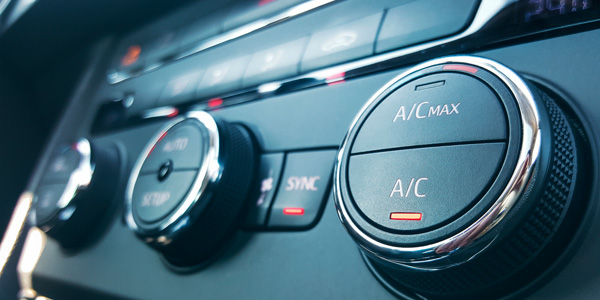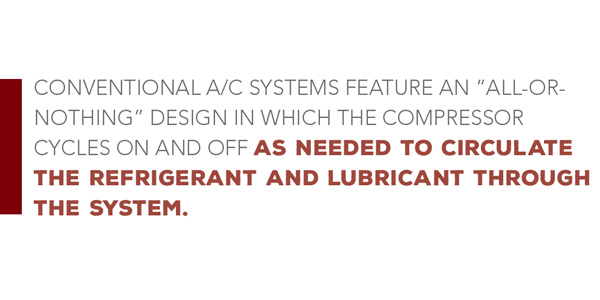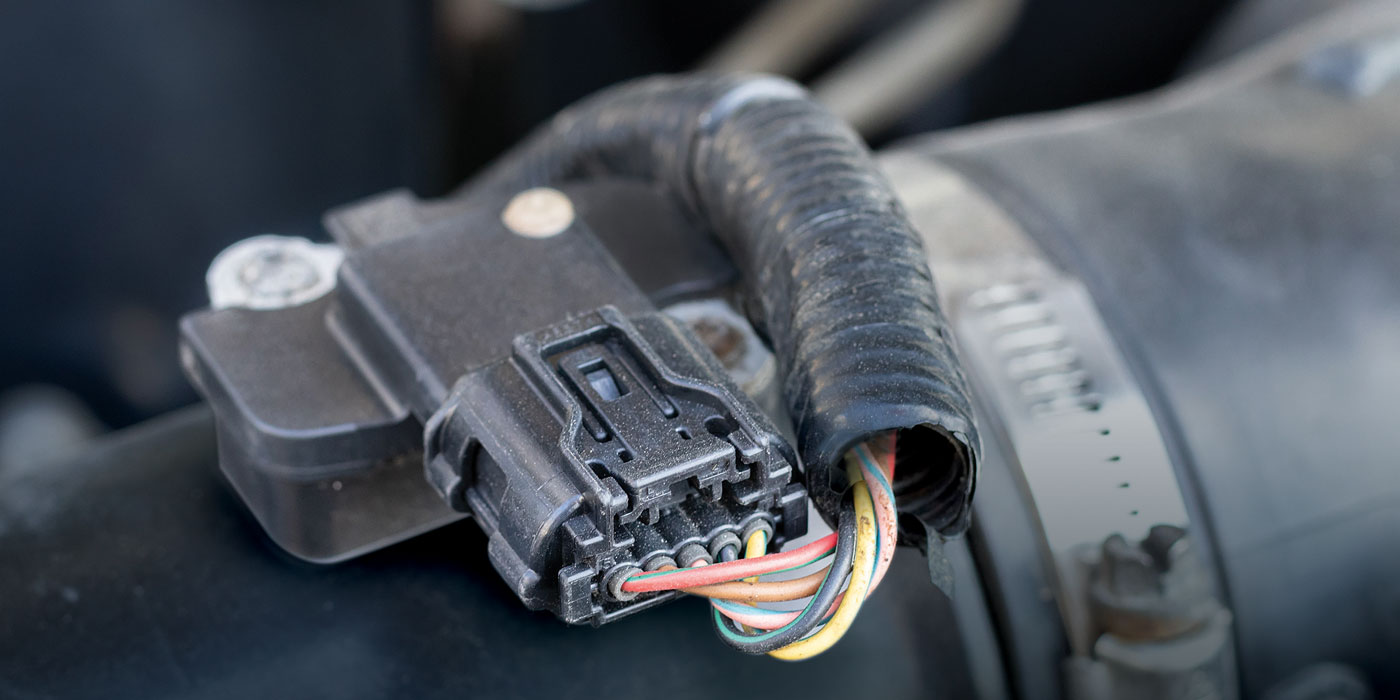
In a conventional mobile air-conditioning system, the compressor runs at full capacity whenever the clutch is engaged. In this “all-or-nothing” system design, the compressor cycles on and off as needed to circulate the refrigerant and lubricant through the system. Switches, relays and transducers control the clutch (and therefore the compressor), keeping the system operating smoothly – and, in the event of failure, shutting the compressor down to prevent catastrophic failure.
While there are a number of different switches used (depending on the system design), two of the most common are the low-pressure and high-pressure cutout switches. These switches are normally closed, providing power through the compressor-control circuit when the system is operating at safe pressures. Much like a circuit breaker, these switches protect the A/C system from damage.
The low-pressure cutout switch opens when low-side system pressure drops below a pre-determined pressure (usually around 25 psi). Lack of system pressure can be an indication of a refrigerant leak, which could lead to a lack of system lubrication. Consequently, the compressor is shut down when this switch opens.
For the high-pressure cutout switch, the reverse logic applies: The switch is normally closed until the pressure reaches its upper limit, and it opens to prevent the compressor from continuing to pump refrigerant. Excessive pressure creates additional heat, which can cause the compressor case to deform, leading to failure. Increased low-side pressure also can damage the evaporator coils.

Another common protection device is a thermal switch, mounted to the compressor case. If the case becomes too hot, the normally closed switch will interrupt power to the clutch until the case cools to an acceptable level.
A clutch-cycling switch is used only with fixed orifice-tube systems. The clutch-cycling switch is located in the low side of the A/C system, taking its high- and low-pressure signals from the low side of the system. It acts as a low-pressure cutout switch, in addition to cycling the compressor on and off. A high-pressure cutout switch still is used to monitor pressure on the high side of the A/C system.
We are well-beyond the heyday of the R12 to R134a retrofit, but occasionally we still have customers dealing with classic cars that have been retrofitted and need a replacement clutch-cycling switch. Due to the differences in system pressures between R12 and R134a, these switches have a lower “cycle-off” pressure, to maintain correct evaporator temperatures. Specialized “retrofit” cycling switches are available to compensate for these differences, and are marked as such.
Increasingly, powertrain control modules and body control modules are running modern A/C systems. The simple “on-off” logic of relays and pressure switches is replaced with a battery of sensors that feed variable-voltage signals to the computers, allowing for compressor engagement and condenser-fan engagement based on a number of operating conditions. Many manufacturers are even moving toward a clutchless compressor design, which uses a pulse-width-modulated solenoid and a direct-drive compressor to vary the output of the compressor based on demand from the A/C controls.













